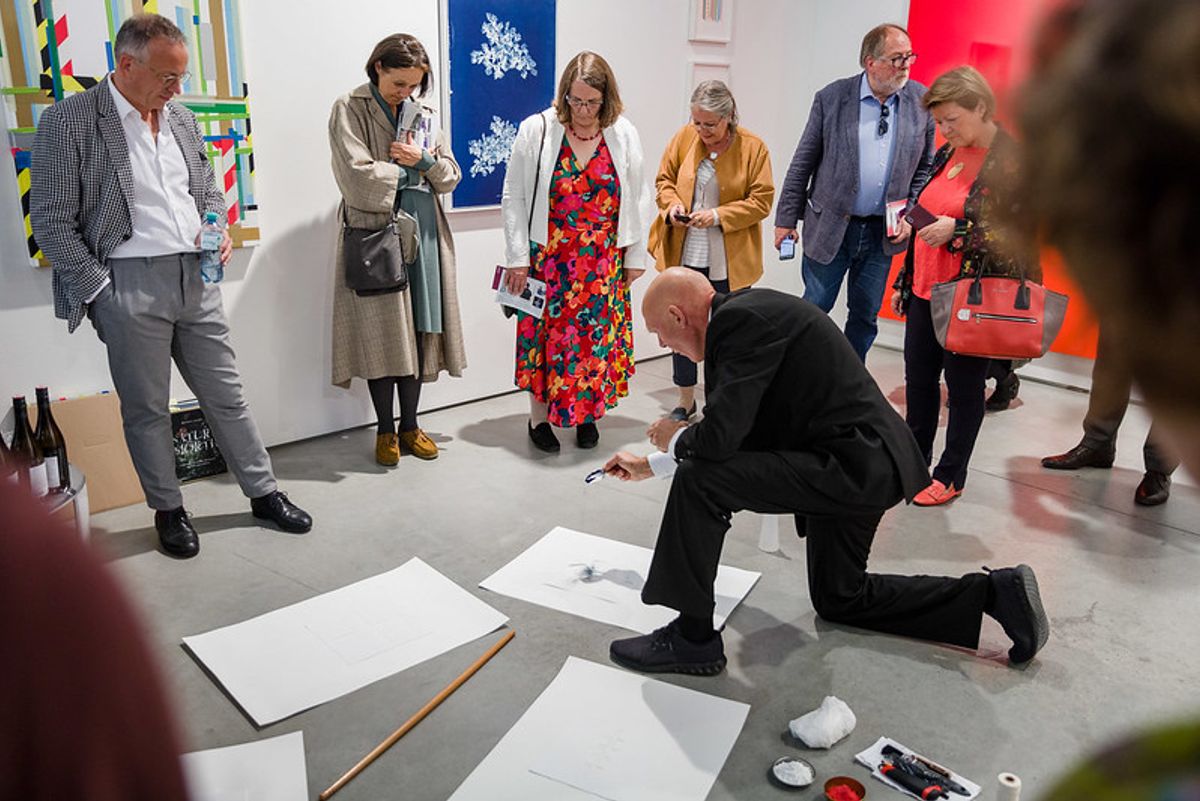Despite clashing with the Austrian snap elections, Viennacontemporary (26-29 September) went surprisingly smoothly—the country’s former chancellor Sebastian Kurz’s right-wing People’s Party was, as expected, voted in on the last day of the fair.
This is a notoriously slow selling fair and, while not exactly a buying frenzy, most galleries sold consistently through the four day run. It saw the arrival of new artistic director Johanna Chromik and the announcement that the managing director, Renger van den Heuvel, will be stepping down. Viennacontemporary is concertedly regional in its approach, with the majority of exhibitors from Central and Eastern Europe. Out of 110 participating galleries, almost a third were from Eastern Europe (only slightly less than those from Austria itself)—countries formerly behind the Iron Curtain lack a fair on anything approaching a comparable level.
For collectors and institutions interested in Eastern European art, whether contemporary or historical, Vienna is the point of reference. As these countries tend to have underdeveloped art markets and few institutions, prices tend to be low and daring collectors can pick up real bargains—prices for Eastern European works were mainly in the four-digit range, even for works from the 1960s and 70s. Among the first-time participants were smaller galleries such as AnnArt (Bucharest), Eugster (Belgrade), Galerija Fotografija (Ljubljana), SPZ (Prague) and Wschód Gallery (Warsaw), all little known on the international stage. As galleries get more established, they have tended to turn to the bigger international fairs, hence Hunt Kastner (Prague) and Plan B (Berlin, Cluj-Napoca) return to Vienna only with special projects (as both do for this edition)—Plan B sold a large drawing by the rediscovered Romanian painter and sculptor Horia Damian for €16,000.
On the other hand, the drain of the bigger galleries means that the fair has to look constantly for new talent, namely up-and-coming galleries who often struggle with funds. The lack of private buying power may also explain the weak presence of Western galleries at Viennacontemporary—the biggest Austrian collectors buy in Basel or London.
While the roster of galleries from Western Europe is limited, it featured some highlights this year, including Sabrina Amrani from Madrid, whose socio-political programme chimes with the zeitgeist. She sold a sculpture by Babak Golkar for €20,000 and a couple of works by Alexandra Karakashian (from South Africa) and the Madagascan artist Joël Andrianomearisoa for up to €5,000 each.
But Austrian collectors and institutions are also loyal to their local dealers, hence why the important Austrian galleries participate. With some success—the locally based Nächst St. Stephan sold two medium formats by the Austrian artist Herbert Brandl for €30,000 each. The sale of a work by Jessica Stockholder, from the US, for €70,000 was one of the major sales of this year's edition.
The fair is also the starting point for other initiatives spreading into the city. In co-operation with the collector and dealer Amir Shariat, the Budapest gallery ACB mounted a survey of Tamás Hencze—the Hungarian painter who died last year—in the reception hall of a former office building. In contrast to many of his colleagues, such as Victor Vasarely, Hencze had stayed in Hungary so is less well known on an international stage. For the gallery, this off-site exhibition paid off at the fair, with works sold for up to €20,000.
Other galleries set up shop in a former hammam in the city—with parties every night. Whether this resulted in actual sales at the fair is unclear. But it illustrates the vibrancy of the local art scene, reminiscent of the spirit of Berlin in the early Noughties, and does not go unnoticed—with two weeks between Berlin Art Week (11-15 September) and Viennacontemporary and the gallery festival Curated By (until 12 October), it is increasingly becoming a destination for foreign collectors.


